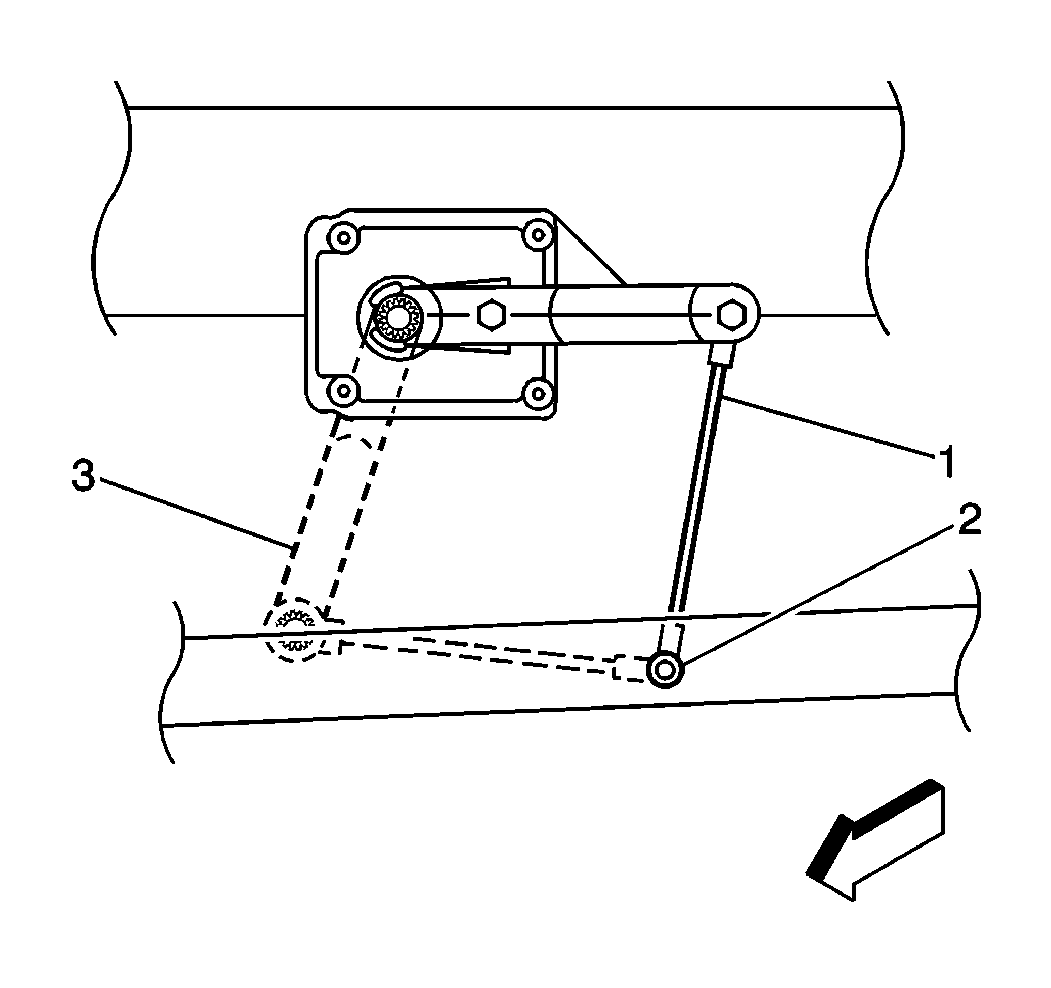Removal Procedure
Notice: When a procedure requires disconnection of the automatic level control sensor from the tie rod, always disconnect the link at the tie rod (not at the automatic level control sensor arm), and take care not to bend or break the automatic level control sensor arm. When reconnecting the link to the tie rod, make sure that the sensor arm and link are properly oriented. Improper orientation will prevent the ALC system from operating properly and can result in damage to the automatic level control sensor.
- Remove the battery ground cable.
- Raise and support the vehicle. Refer to Lifting and Jacking the Vehicle in General Information.
- Remove the Automatic Level Control sensor connector.
- Remove the Automatic Level Control sensor (4) from under the body rail.
- Remove the Automatic Level Control sensor link (1) from the tie rod (2) ball stud.
- Remove the bolts/screws which retain the Automatic Level Control sensor.
- Remove the Automatic Level Control sensor (4) from the vehicle.
- Remove the bolts/screws to the Automatic Level Control sensor bracket.
- Remove the sensor electrical harness clip and bracket from the sensor.

Caution: Unless directed otherwise, the ignition and start switch must be in the OFF or LOCK position, and all electrical loads must be OFF before servicing any electrical component. Disconnect the negative battery cable to prevent an electrical spark should a tool or equipment come in contact with an exposed electrical terminal. Failure to follow these precautions may result in personal injury and/or damage to the vehicle or its components.
Important: Do NOT bend or break the sensor arm when you remove the link.
Installation Procedure
- Install the bracket and sensor electrical harness clip to the ALC sensor (4).
- Install the bolts/screws to the ALC sensor bracket.
- Install the ALC sensor (4) to the vehicle.
- Install the bolts/screws retaining the ALC sensor.
- Install the ALC sensor link (1) to the tie rod (2) ball stud.
- Install the ALC sensor connector to the underbody rail.
- Install the ALC sensor connector.
- Lower the vehicle.
- Install the battery ground cable.

Notice: Use the correct fastener in the correct location. Replacement fasteners must be the correct part number for that application. Fasteners requiring replacement or fasteners requiring the use of thread locking compound or sealant are identified in the service procedure. Do not use paints, lubricants, or corrosion inhibitors on fasteners or fastener joint surfaces unless specified. These coatings affect fastener torque and joint clamping force and may damage the fastener. Use the correct tightening sequence and specifications when installing fasteners in order to avoid damage to parts and systems.
Tighten
Tighten the bolts/screws to 4 N·m (35 lb in).
Tighten
Tighten the bolts/screws to 10 N·m (89 lb in).
Important: Do NOT bend or break the sensor arm when you connect the link.
Caution: Unless directed otherwise, the ignition and start switch must be in the OFF or LOCK position, and all electrical loads must be OFF before servicing any electrical component. Disconnect the negative battery cable to prevent an electrical spark should a tool or equipment come in contact with an exposed electrical terminal. Failure to follow these precautions may result in personal injury and/or damage to the vehicle or its components.
